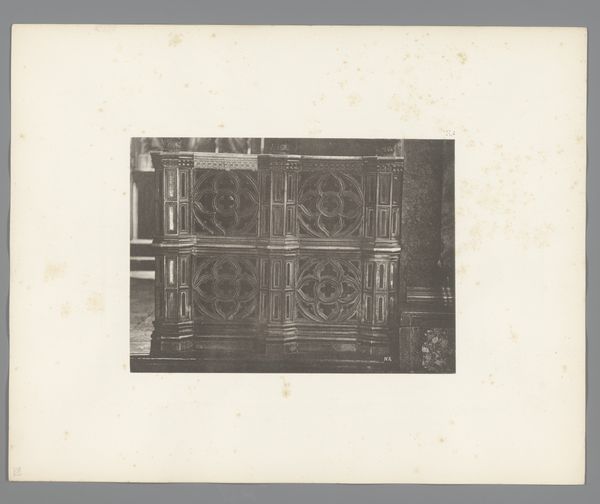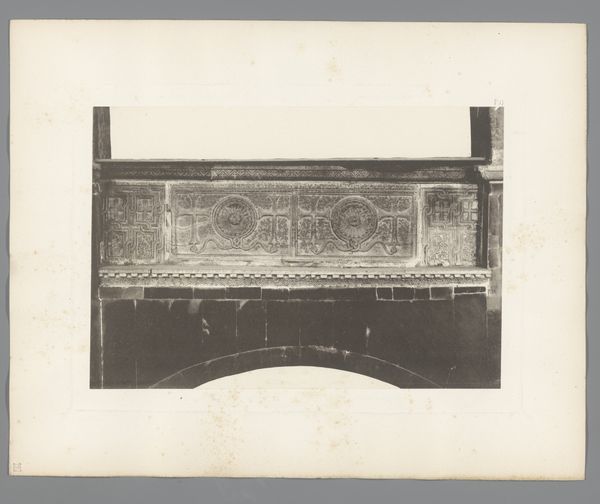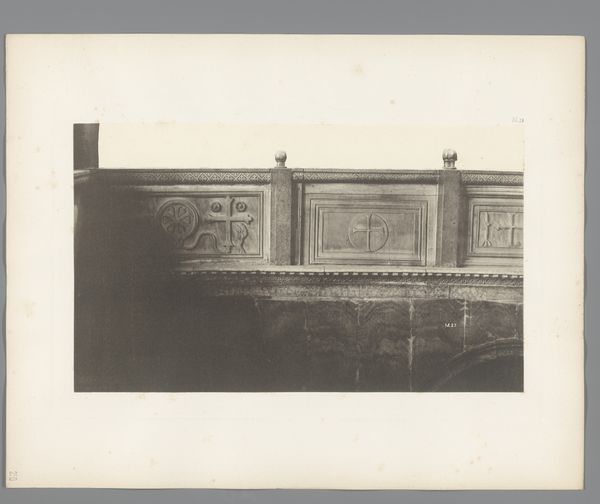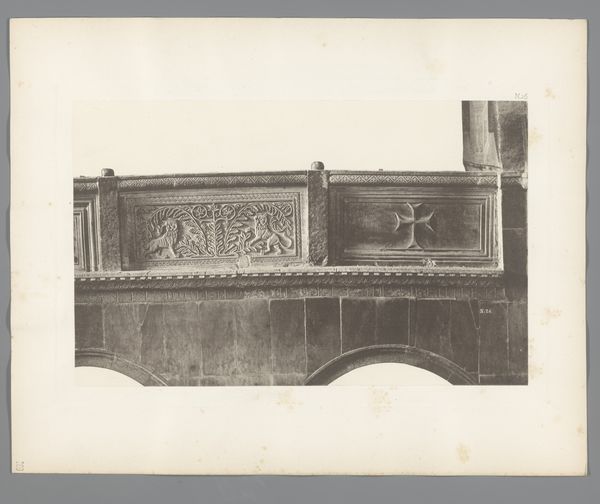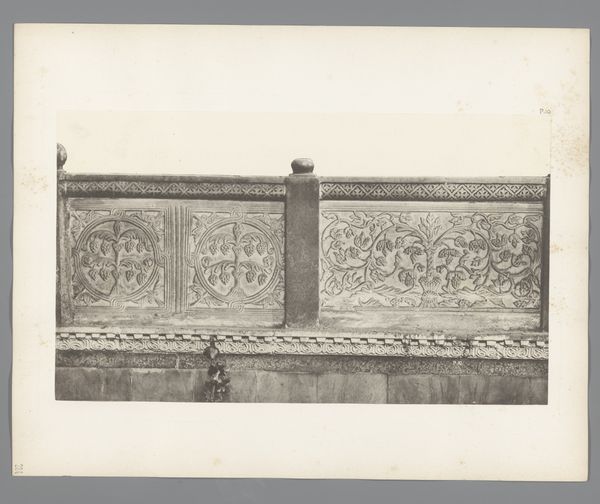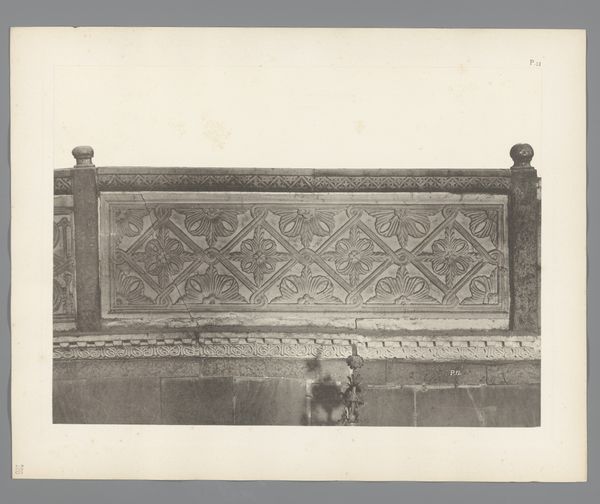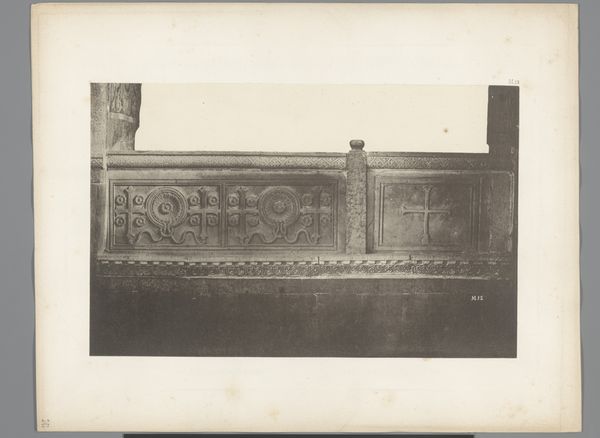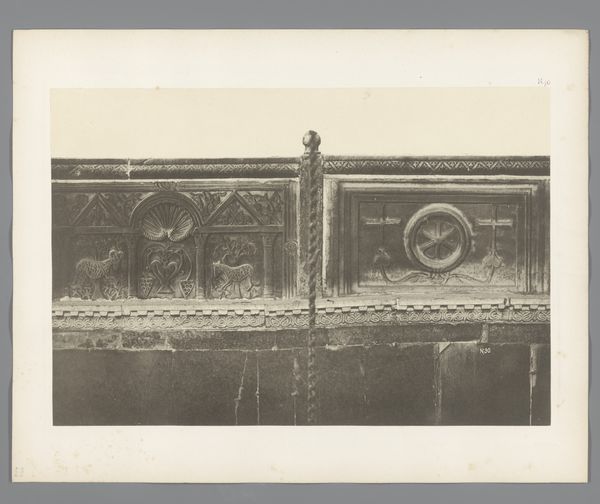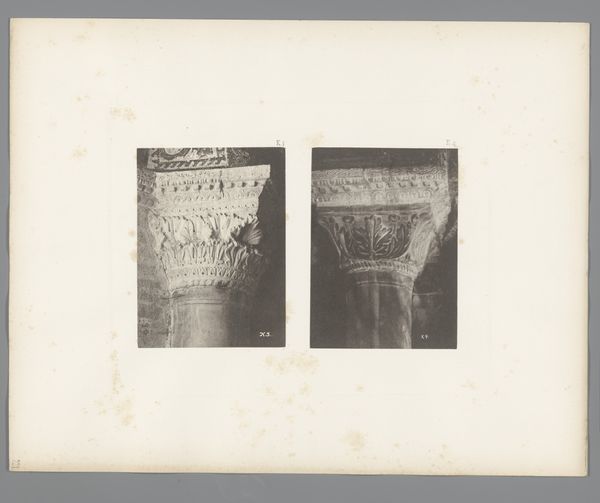
Dimensions: height 310 mm, width 396 mm
Copyright: Rijks Museum: Open Domain
Curator: The gelatin-silver print before us, titled "Detail van de San Marco in Venetië," presents an intriguing snapshot of architectural ornamentation. Its creator is Carl Heinrich Jacobi, and its date places it before 1885. What are your first impressions? Editor: It feels like stepping back in time. The image is soft, muted…almost dreamlike. Like a half-forgotten memory of a place, rendered in shades of grey. There's something really compelling about the aged paper itself; it lends such atmosphere. Curator: Absolutely. Consider the context: Venice as a crossroads of cultural exchange, where Byzantine, Roman, and Oriental influences converged. The basilica is a potent symbol of Venice's complex political and religious identity, mirroring a long legacy of conquest and adaptation. Editor: Yes, it’s fascinating. Those geometric details combined with the repeated palmette motif evoke echoes of the ancient world, which brings to my mind classical ideals and aesthetics as they permeate across epochs... Do you feel how tactile it is, too? I imagine running my fingers over those carved surfaces...feeling the cool stone. Curator: I see that tactile sense you mean, though, for me, it raises questions about preservation and access. Who gets to touch the past? Who has the authority to interpret it? What is the impact of such photography? We see, but what might remain unseen, un-photographed, deliberately left out? Editor: Oh, definitely, there are levels here about who gets to represent, to show, to own the experience... But the play of light is interesting. This moment captured...it feels very still, very peaceful. You almost expect to hear the soft lapping of water nearby... it kind of makes you want to lose yourself in Venice's labyrinthine streets. Curator: Indeed. Jacobi's photograph serves as a reminder that architecture and urban spaces are imbued with historical, cultural, and political significance. It challenges us to consider the enduring power of visual representation and its role in shaping our understanding of the past. Editor: Ultimately, despite its silence, it sings a little, don't you think?
Comments
No comments
Be the first to comment and join the conversation on the ultimate creative platform.
